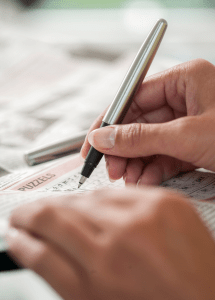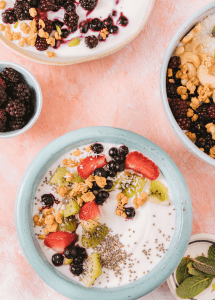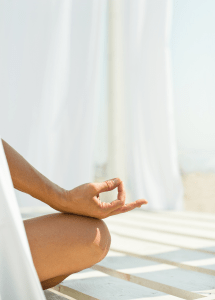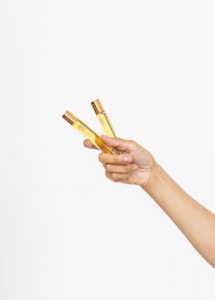EQ Energy Primer

If you’re feeling sluggish, lethargic, or just plain exhausted, you’re not alone. In this post-pandemic world, it’s all too common to struggle with low energy levels. Fortunately, there are several effective strategies and tools you can use to help you feel more awake, energized, and present. In this EQ Energy Primer, we will introduce a holistic approach to improving your energy and vitality!
Step 1: It Starts With Sleep
 One of the base requirements for sustained energy is quality sleep. The best way to aim for that goal of 7-9 hours of uninterrupted sleep every night is by establishing a consistent sleep schedule. Additionally, try to establish a calming bedtime routine, limit exposure to electronic devices before bed, and create a sleep-conducive environment by ensuring your bedroom is dark, quiet, and cool. Looking for more comprehensive Sleep Support? Check out our EQ Sleep Primer.
One of the base requirements for sustained energy is quality sleep. The best way to aim for that goal of 7-9 hours of uninterrupted sleep every night is by establishing a consistent sleep schedule. Additionally, try to establish a calming bedtime routine, limit exposure to electronic devices before bed, and create a sleep-conducive environment by ensuring your bedroom is dark, quiet, and cool. Looking for more comprehensive Sleep Support? Check out our EQ Sleep Primer.
Step 2: Stimulate the Brain
Cognitive Training and Mental Energy
 While not directly related to physical energy, cognitive training exercises have been shown to improve cognitive performance and mental energy. A study published in the journal “Applied Cognitive Psychology” in 2010 examined the effects of cognitive training on mental fatigue. Participants who completed computer-based cognitive training tasks showed reduced mental fatigue and reported higher levels of energy compared to a control group. [1] To enhance mental alertness and focus, engage in brain-stimulating activities; incorporate puzzles, crosswords, sudoku, or other brain teasers into your routine.
While not directly related to physical energy, cognitive training exercises have been shown to improve cognitive performance and mental energy. A study published in the journal “Applied Cognitive Psychology” in 2010 examined the effects of cognitive training on mental fatigue. Participants who completed computer-based cognitive training tasks showed reduced mental fatigue and reported higher levels of energy compared to a control group. [1] To enhance mental alertness and focus, engage in brain-stimulating activities; incorporate puzzles, crosswords, sudoku, or other brain teasers into your routine.
Feeling the drag of that midday slump? Try these websites for a couple of brain-stimulating activities:
- BrainBashers: Provides a collection of brain teasers, puzzles, and games to challenge your thinking and problem-solving abilities.
- Crossword Labs: Crossword puzzles are excellent for improving vocabulary, word association, and problem-solving abilities.
Step 3: Stay Hydrated
 Proper hydration is essential for sustained energy throughout the day, as dehydration can cause fatigue and lethargy. Studies have shown that mild dehydration can impair mood, memory, and brain performance. [5] Here are some helpful tips for how to increase your water intake throughout the day:
Proper hydration is essential for sustained energy throughout the day, as dehydration can cause fatigue and lethargy. Studies have shown that mild dehydration can impair mood, memory, and brain performance. [5] Here are some helpful tips for how to increase your water intake throughout the day:
- Carry a reusable water bottle everywhere with you
- Create a schedule and set alarms to remind yourself to drink water at various points throughout the day
- Create your own electrolyte mix by adding a pinch of Celtic Sea Salt or Himalayan Salt with a pinch of baking soda to your water. To take it to the next level add a few squeezes of a fresh orange or lemon!
Step 4: Keep Your Body Nourished
 Eating nutrient-rich foods can help boost energy levels by providing the body with essential nutrients, supporting metabolic processes, and preventing deficiencies. But be careful – junk food can have the opposite effect and deplete your energy stores! Skipping meals or going long periods of time without eating can a;sp cause your energy levels to drop, so aim to have regular meals and snacks throughout the day to maintain a steady supply of fuel for your body. Here are a few guidelines for making sure you’re putting energizing foods into your body:
Eating nutrient-rich foods can help boost energy levels by providing the body with essential nutrients, supporting metabolic processes, and preventing deficiencies. But be careful – junk food can have the opposite effect and deplete your energy stores! Skipping meals or going long periods of time without eating can a;sp cause your energy levels to drop, so aim to have regular meals and snacks throughout the day to maintain a steady supply of fuel for your body. Here are a few guidelines for making sure you’re putting energizing foods into your body:
- Carbohydrates as fuel: Complex carbohydrates, such as whole grains, legumes, and whole foods, provide more sustainable energy that will keep the body going longer, as they release energy slowly and steadily, providing a more consistent source of fuel for the body. [2]
- Fats: Fats also play a major role in energy production – fats are broken down into fatty acids and stored as triglycerides in adipose tissue for future use. When the body needs energy, it can break down these stored fats and convert them into usable energy. Healthy sources of fats include avocados, nuts, seeds, olive oil, fatty fish, and coconut oil.
- Protein for sustained energy: While proteins are mainly known for their role in building and repairing tissues, they can also contribute to energy production. When the body doesn’t have enough carbohydrates or fats for fuel, it can break down proteins into amino acids, which can then be converted into glucose through a process called gluconeogenesis. Good sources of protein include lean meats, poultry, fish, legumes, tofu, eggs, and dairy products.
Step 5: Incorporate Movement & Exercise
 Exercise not only enhances your physical well-being but also stimulates the release of endorphins, leading to improved mood and increased energy levels. Studies have shown that a moderate intensity exercise program typically results in moderate to average improvements in feelings of fatigue, energy and vitality. [6] To optimize your energy levels in the long term, aim to move your body for 20-30 minutes at least 4-5 days a week – but don’t do too much too quickly. Start with a routine that feels doable and not intimidating, and gradually increase the intensity of your workout as it feels comfortable. If you are feeling tired or busy but still want to incorporate exercise into your routine, here are a few tips to make movement more manageable and sustainable:
Exercise not only enhances your physical well-being but also stimulates the release of endorphins, leading to improved mood and increased energy levels. Studies have shown that a moderate intensity exercise program typically results in moderate to average improvements in feelings of fatigue, energy and vitality. [6] To optimize your energy levels in the long term, aim to move your body for 20-30 minutes at least 4-5 days a week – but don’t do too much too quickly. Start with a routine that feels doable and not intimidating, and gradually increase the intensity of your workout as it feels comfortable. If you are feeling tired or busy but still want to incorporate exercise into your routine, here are a few tips to make movement more manageable and sustainable:
Prioritize consistency
Consistency is key when it comes to exercise. Even if you’re short on time or lacking energy, try to incorporate some form of physical activity into your daily routine – it can be as simple as taking the stairs instead of the elevator, quick stretching and exercise breaks during work, or going for a short walk at lunchtime.
Find enjoyable activities
Choose exercises or physical activities that you genuinely enjoy. When you find an activity that you look forward to, it becomes easier to overcome feelings of tiredness or busyness.
Start with small steps
Begin by setting realistic and achievable goals when it comes to movement. Instead of aiming for long, exhausting workout sessions, focus on short bouts of physical activity. For example, start with 10 minutes of brisk walking or a quick workout routine at home, then gradually increase the duration and intensity as your energy levels improve and your schedule allows.
Here are some quick videos offering a variety of different workouts – find one that feels good to you and get moving!
- 10-minute, no-jumping HIIT workout by MadFit
- Fast 1-mile walk at home (Happy Mood Boost) by Growwithjo
- 8-minute Good Morning Pilates stretch by Well+Good
Step 6: Practice Mindfulness and Meditation
 Incorporating mindfulness and meditation into your daily routine can work wonders for your energy. Several studies have demonstrated the positive effects of mindfulness meditation on cognitive function and subjective energy levels, and one study showed that brief mindfulness meditation interventions increased self-reported vitality and reduced feelings of fatigue. [4]
Incorporating mindfulness and meditation into your daily routine can work wonders for your energy. Several studies have demonstrated the positive effects of mindfulness meditation on cognitive function and subjective energy levels, and one study showed that brief mindfulness meditation interventions increased self-reported vitality and reduced feelings of fatigue. [4]
Here are a few suggestions for quick and easy ways practice mindfulness:
- Deep breathing and/or meditation – quick guide to getting started with meditation
- Yoga – 10-minute yoga for beginners video
- Journaling – while a daily journaling practice may feel daunting, it’s easier than you think. Look HERE for a daily question to get your thoughts flowing
- Practice gratitude – get started with a few of these prompts:
- Who are the people in your life you are most thankful for and why?
- What are some simple pleasures or everyday moments that you appreciate and feel thankful for?
- Reflect on a recent accomplishment or success and express gratitude for the effort that went into achieving it.
Step 7: Utilize Energy-Boosting Tools
Aromatherapy
Certain essential oils like peppermint, lemon, and rosemary have stimulating properties that can increase alertness and focus. Use them in a diffuser, as a room spray, or apply them topically for a fast-acting, energizing effect.
 EQ Dynamic Roller Duo
EQ Dynamic Roller Duo
Our Dynamic Roller Duo energizes, calms, and regulates with aromatherapeutic benefits of peppermint, jasmine, and lemon to reset and uplift, or lavender, bergamot, and rosewood to soothe and relax.*
Light therapy
Light therapy has been shown to have positive effects on mood and mental well-being. Exposure to bright light can stimulate the release of neurotransmitters, such as serotonin, which play a role in mood regulation. By improving our mood, light therapy can indirectly contribute to higher energy levels and a greater sense of vitality.
 EQ Energy Capsules
EQ Energy Capsules
Formulated with an energizing yet calming blend of natural anhydrous caffeine and botanically-derived L-theanine, our Energy Capsules might just be the perfect product for giving you the boost you need to get through a demanding day.*
The Takeaway…
By incorporating these strategies into your lifestyle, you can enhance your energy levels and experience a greater sense of vitality. Remember, consistency is key, so make these practices a part of your daily routine. Try to prioritize quality sleep, engage in brain-stimulating activities, exercise regularly, practice mindfulness, and nourish your body with a balanced diet. Additionally, consider utilizing energy-boosting tools and supplements to further support your energy levels. Embrace these habits, and you’ll be well on your way to living a more energized and fulfilling life!
For more support on your wellness journey, our Certified Wellness Coaches are here to help. Schedule your first complimentary wellness coaching session here!
References:
[1] https://www.ncbi.nlm.nih.gov/pmc/articles/PMC6585675/
[2] https://www.ncbi.nlm.nih.gov/books/NBK459280/
[3] Boost your energy presentation (Catalyst Coaching Institute)
[4] Keng SL, Smoski MJ, Robins CJ. Effects of mindfulness on psychological health: a review of empirical studies. Clin Psychol Rev. 2011 Aug;31(6):1041-56. doi: 10.1016/j.cpr.2011.04.006. Epub 2011 May 13. PMID: 21802619; PMCID: PMC3679190.
[5] https://www.ncbi.nlm.nih.gov/pmc/articles/PMC3553795/
[6] Wender CLA, Manninen M, O’Connor PJ. The Effect of Chronic Exercise on Energy and Fatigue States: A Systematic Review and Meta-Analysis of Randomized Trials. Front Psychol. 2022;13:907637. Published 2022 Jun 3. doi:10.3389/fpsyg.2022.907637